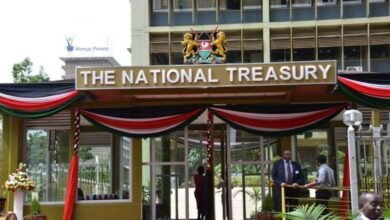
Kenyans have until March 22, 2022, to submit recommendations to the National Treasury on policy and tax measures to be included in the 2022/23 national budget.
National Treasury Principal Secretary Julius Muia said the proposals should focus on broader topics such as steps to improve economic resilience and recovery.
Others include ideas for accelerating the Big 4 Agenda’s execution, revenue mobilization, business recovery, job creation, and debt sustainability
“The National Treasury Cabinet Secretary is expected to present the 2022/23 budget in the National Assembly on April 7. While finalizing the statement, he appreciates contributions from members of the public,” said Muia.
The budget plan for the fiscal year that begins on July 1, 2022, is expected to be unveiled amid global-economic turmoil, as Kenya prepares for the August 9, 2022, general election.
The country’s total public debt was captured at Ksh.8.2 trillion by January this year, a trillion shy to hit the Ksh.9 trillion debt ceiling with Members of Parliament proposing to raise a debt ceiling to Ksh.12 trillion to create room for more borrowing.
Kenya aims to reduce its budget deficit by five percent in the next five years to 2026/27, in order to reduce its debt burden.
According to the National Treasury, the deficit is expected to drop gradually every financial year from 8.2 percent in 2021/22, 6.9 percent in 2022/23, and 4.4 percent in 2023/24. It is expected to drop further to 3.9 percent in 2024/25 and 3.2 percent in 2025/26.
”We project to cut annual debt financing to below Ksh.700 billion within the medium plan,” said National Treasury.
Ukur Yatani-led Ministry is eyeing to borrow Ksh.125.5 billion and Ksh.502.1 billion in 2025/26 fiscal year.
The development budget is projected to be near Ksh1 trillion by the end of the medium plan.
By September 15, 2021, Kenya’s external debt service to revenues ratio declined from 20.8 percent in June 2000 to 4.3 percent in June 2013, then rose to a high of 21.4 percent in June 2019.
The high ratio in June 2019 was mainly on account of a one-off USD 750 million Eurobond repayment.





